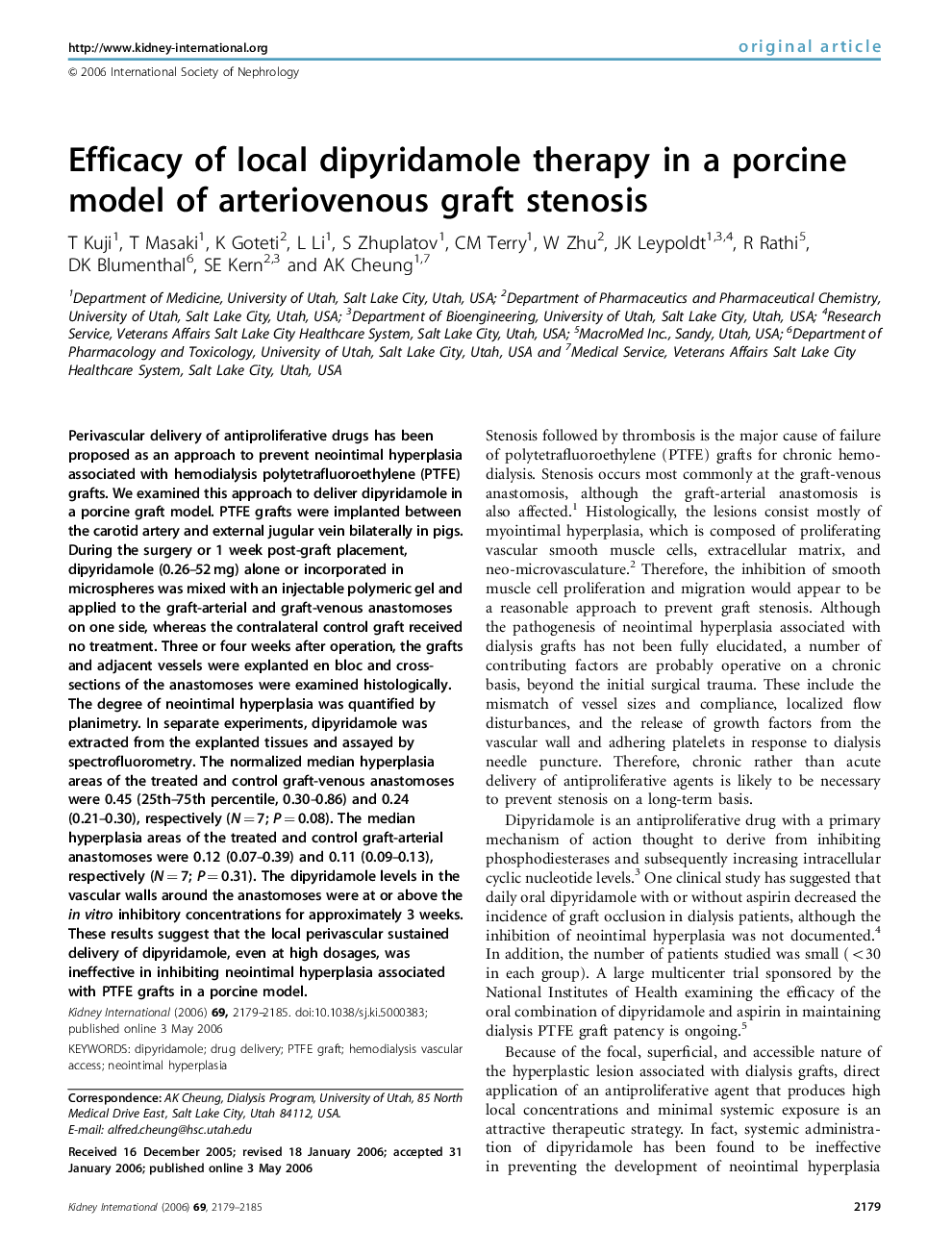| Article ID | Journal | Published Year | Pages | File Type |
|---|---|---|---|---|
| 3890035 | Kidney International | 2006 | 7 Pages |
Perivascular delivery of antiproliferative drugs has been proposed as an approach to prevent neointimal hyperplasia associated with hemodialysis polytetrafluoroethylene (PTFE) grafts. We examined this approach to deliver dipyridamole in a porcine graft model. PTFE grafts were implanted between the carotid artery and external jugular vein bilaterally in pigs. During the surgery or 1 week post-graft placement, dipyridamole (0.26–52 mg) alone or incorporated in microspheres was mixed with an injectable polymeric gel and applied to the graft-arterial and graft-venous anastomoses on one side, whereas the contralateral control graft received no treatment. Three or four weeks after operation, the grafts and adjacent vessels were explanted en bloc and cross-sections of the anastomoses were examined histologically. The degree of neointimal hyperplasia was quantified by planimetry. In separate experiments, dipyridamole was extracted from the explanted tissues and assayed by spectrofluorometry. The normalized median hyperplasia areas of the treated and control graft-venous anastomoses were 0.45 (25th–75th percentile, 0.30–0.86) and 0.24 (0.21–0.30), respectively (N=7; P=0.08). The median hyperplasia areas of the treated and control graft-arterial anastomoses were 0.12 (0.07–0.39) and 0.11 (0.09–0.13), respectively (N=7; P=0.31). The dipyridamole levels in the vascular walls around the anastomoses were at or above the in vitro inhibitory concentrations for approximately 3 weeks. These results suggest that the local perivascular sustained delivery of dipyridamole, even at high dosages, was ineffective in inhibiting neointimal hyperplasia associated with PTFE grafts in a porcine model.
